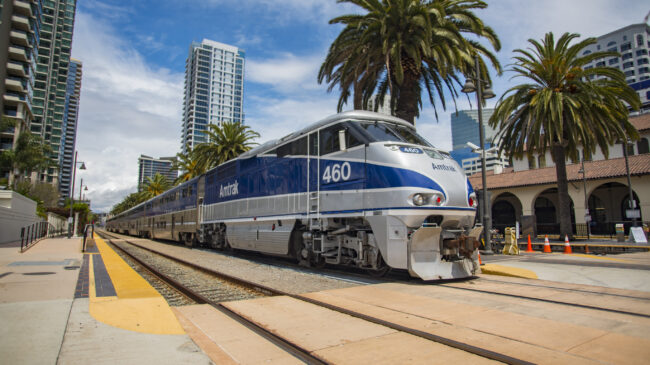The California High-Speed Rail Authority’s latest business plan includes a new, higher $105 billion price tag but the plan is also notable for what it lacks. The Draft 2022 Business Plan does not provide updated ridership and revenue estimates, relying instead on forecasts first published in January 2020—before the COVID-19 pandemic. As a result, the California High-Speed Rail Authority is providing taxpayers and legislators with stale analysis ahead of an expensive policy decision on the system.
The rail authority claims it is working on a new and improved model and, “Updated ridership and revenue forecasts generated by the new model will be presented in the 2023 Project Update Report to the Legislature.”
The just-released 2022 plan still uses the Jan. 2020 ridership analysis, conducted by Cambridge Systematics, which projects California’s population will grow to 42.81 million when rail service is expected to start in 2029 and to 45.87 million in 2040. However, recent Department of Finance population estimates show the state’s population growth stopped and then went into reverse during the pandemic, not only due to excess deaths but also because of fewer births and outmigration.
Even before the pandemic started, California appeared to be following the path of Illinois and northeastern states which have seen population decreases for several years. It is now plausible that California’s population, 39.3 million in 2021, could remain below 40 million for the foreseeable future.
Not only can California expect fewer people than the business plan predicts, but those individuals are probably less likely to use rail transportation than previously forecast. The rise of remote work and online meetings have cut into commuting and business travel, respectively. While the transition from pandemic to endemic conditions should coax more people back to offices, conference centers, and the travel modes that take them there, online experiences have proved to be an effective alternative in many cases and can be expected to retain much of the gains they’ve made during the pandemic.
For comparison, Amtrak’s San Joaquins intercity line, declined slightly in each of the five fiscal years prior to the pandemic, suggesting a long-term shift away from intercity rail travel in the Central Valley. The train, which runs from Bakersfield to the Bay Area and parallels much of the initial high-speed rail operating segment, saw a 59% decline in ridership from just under 1.1 million riders in fiscal 2019 (just before the pandemic) to just over 400,000 passengers in the 2021 fiscal year ending Sept. 30.
Although we have not seen projections for Amtrak’s San Joaquins ridership going forward, we do know that telecommuting, reduced rail use, and other travel pattern changes have the San Francisco Bay Area Rapid Transit system only expecting to recover 70% of its pre-pandemic ridership over the next decade, by 2032.
Given these developments, it is harder than ever to believe that California’s high-speed rail system will be able to attract the 38.6 million annual passengers in 2040 it predicts in its “Medium Ridership” scenario. Equally improbable is the 8.6 million riders forecast for 2032, when the high-speed rail portion is supposed to operate along the 171 miles between Bakersfield and Merced, even though some of these projected riders would be on lower-speed segments connecting to San Jose and Sacramento.
As state legislators decide whether to issue another $4 billion of bullet train bonds this spring, they should have the best and most recent possible information to make informed decisions. By failing to provide a timely update of ridership and revenue projections, the California High-Speed Rail Authority is offering policymakers—and taxpayers—insufficient data to address the question of whether high-speed rail can cover its operating costs as required by Proposition 1A.
With operating losses appearing increasingly likely, state leaders should have fresh, up-to-date estimates of how large these financial losses might be and where the money to cover them would come from. Honest observers can disagree about whether continuing to build the high-speed rail system is the right policy for California. But we should all agree that the debate over this policy should be informed by current, objective data.
A version of this column first appeared in the Orange County Register and other newspapers.

